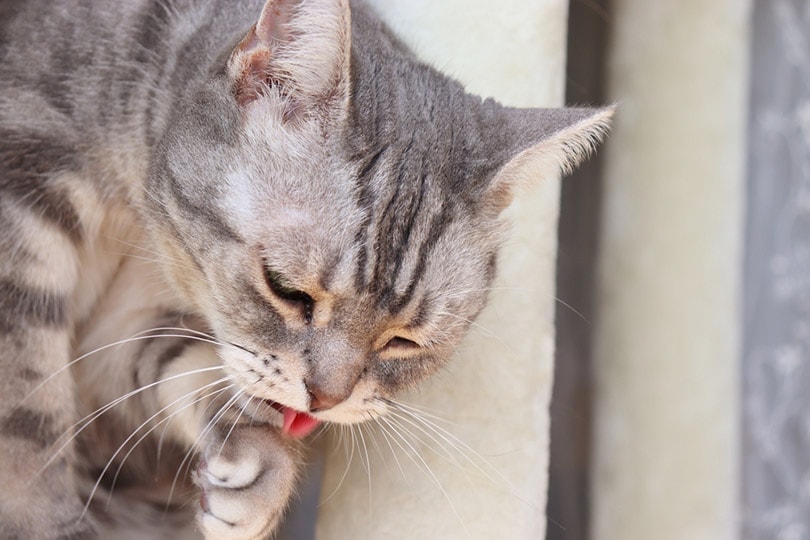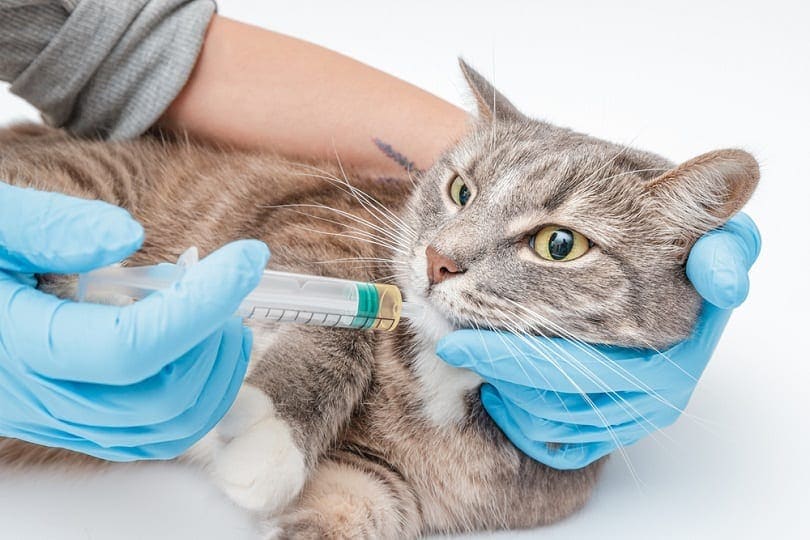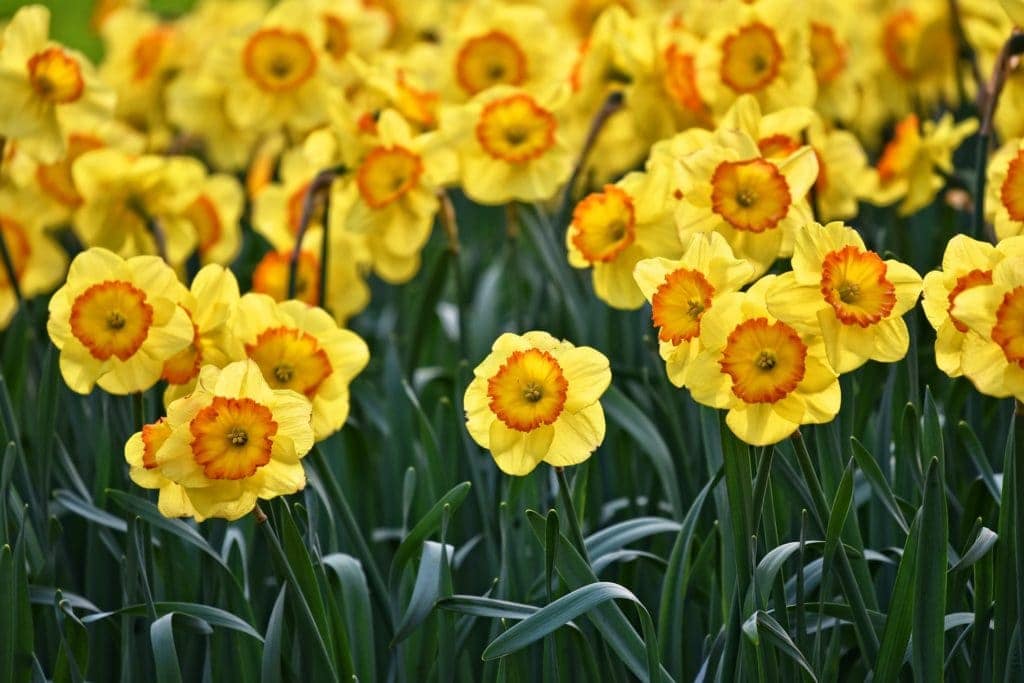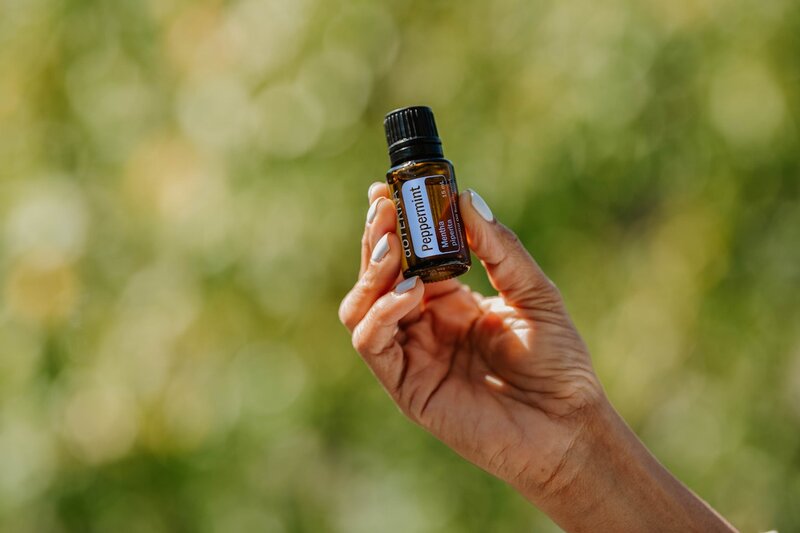Can Cats Eat Tulips? Important Safety Facts (Vet Reviewed)

Updated on

Biting objects that they’re curious about is one of the ways that our cats learn about the world, especially since they don’t have hands. However, not everything your cat investigates is harmless. Some things, like the tulips in your garden, are toxic to cats.
This guide will tell you everything that you need to know about tulips and their toxicity to cats, with a few handy tricks to keep your outdoor-loving feline away from these plants.
Are Tulips Poisonous to Cats?
Many people see tulips as bright, vibrant parts of their garden come springtime, but few know that they’re poisonous. Part of the lily family, tulips are poisonous to cats, dogs, and horses and can even cause allergic reactions in humans.
Unlike some plants that are only poisonous in certain areas, like the roots or the flowers, all parts of the tulip plant are toxic. The level of toxicity varies, though, with the bulbs being the most poisonous and the leaves, flower, and stem containing less poison.

What Are the Signs of Tulip Poisoning in Cats?
If you have an outdoor cat that disappears for hours to explore the neighborhood, it can be difficult to know if they’ve gotten into a patch of tulips and taken a bite of a few petals. The severity of the signs and intoxication level will depend on the part of the plant that your cat has eaten and how much they ingested. They might have devoured several flowers, which means the toxins will build up in their system, even though the flowers contain less tulipalins (the toxic compounds) than the bulbs.
To be safe, if you know that your cat got into tulips, visit your veterinarian right away. The sooner they get medical attention, the higher their chances to recover.

Mild Poisoning Signs
The leaves, flower, and stem all contain the lowest amount of toxin. They’re also more accessible to your cat when they prowl through spring gardens. Provided that your cat doesn’t eat that much of them, the reaction should be mild. This does not mean they do not need medical attention, but rather that they have higher chances of recovering. Signs to look out for include:
- Diarrhea
- Drooling
- Vomiting
Severe Poisoning Signs
If you’re a gardener who likes to keep a vibrant garden or wants to try growing new plants, you should make sure to keep tulip bulbs away from your cats. The bulbs contain a much higher concentration of tulipalins than the rest of the plant, but even the flowers can be dangerous if your kitty eats too many of them.
If you know that your cat got into tulip bulbs, please go to the vet straight away. The ingestion of higher concentrations of tulipalins will cause severe signs, such as:
- Abdominal pain
- Arrhythmia
- Increased respiratory rate
- Trouble breathing
- Tremors
- Coma
How to Treat Tulip Poisoning in Cats

If you suspect that your cat is suffering from poisoning, whether it’s from eating tulips or something else, it’s important to get them to a veterinarian as soon as possible. While mild reactions like vomiting or diarrhea can pass within a few hours, serious poisoning can lead to death and requires proper medical intervention.
Your veterinarian won’t be able to tell you how much of the tulip your cat ingested, as there’s no way to know for certain unless you catch your feline eating them. A vet will, however, be able to take steps to prevent more of the toxin from being absorbed and to monitor your cat’s recovery.
- Induced vomiting
- IV fluids
- Activated Charcoal
- “Pumping” the stomach
- Oxygen therapy
How to Keep Your Cat Away From Tulips
For house cats, keeping them away from toxic plants is as simple as not keeping poisonous plants inside. You might assume that your plants are safe if they’re out of your cat’s reach, but even the pollen of certain plants can be severely toxic to your cat. When in doubt, it’s always better to stick with plants that you know aren’t poisonous.
You’ll probably find it more difficult to make sure your cat stays away from toxins if they roam outside. While you can control the contents of your garden, your neighbors across the street may take offense at you complaining about their flowers. In this case, the best that you can do is monitor your cat while they’re outside and politely ask your neighbors to watch out for any feline visitors to their garden.
What Other Plants Are Toxic to Cats?

Tulips are only a small part of the lily family, and they’re not the only flowers toxic to cats. The following list of plants that are toxic to cats isn’t all-inclusive, but it will give you an idea of what to keep away from your cat and out of your garden.
- Amaryllis
- Autumn crocus
- Azaleas
- Castor bean
- Chrysanthemum
- Daffodils
- English ivy
- Hyacinth
- Lily
- Lily of the valley
- Marijuana
- Narcissus
- Oleander
- Peace lily
- Rhododendron
- Sago palm
- Spanish thyme
- Yew
- Gerber daisy
What Plants Are Safe for Your Cat?
With such a long list of toxic plants, you’re probably wondering what flowers you can safely keep in your garden and home. It may seem like you have to resort to tending to plastic plants, but there are actually a bunch of flowers you can keep that are perfectly safe for your feline.
This list doesn’t cover everything, so check with your veterinarian for anything that you’re not sure about.
- Bamboo
- Basil
- Dill
- Freesia
- Orchid
- Rosemary
- Sage
- Snapdragon
- Sunflowers
- Spider plant
- Venus flytrap
- Gerber daisy
Roses are safe for your cat, but some flowers with “rose” in the name are toxic, so take care when choosing roses for your home.
Conclusion
Like many other flowers, tulips are toxic to cats. Depending on how much and what part of the plant that your cat consumes, they can suffer minor issues, such as vomiting or diarrhea, or more serious issues, such as coma or death. The best way to protect your cat is by keeping tulips and other toxic plants out of your home.
Keeping your favorite feline safe from toxic flowers doesn’t mean you have to remove all the plants in the house, though. There are various options available that are safe for you and your cat and can still brighten up your décor.
Related Reads:
- Can Cats Eat Oats? Nutrition Facts & FAQ
- Can Cats Eat Pringles? Risks & Diet Facts
- Why Do Cats Pull & Chew Their Nails? Feline Behavior Explained
Featured Image Credit: Couleur, Pixabay














